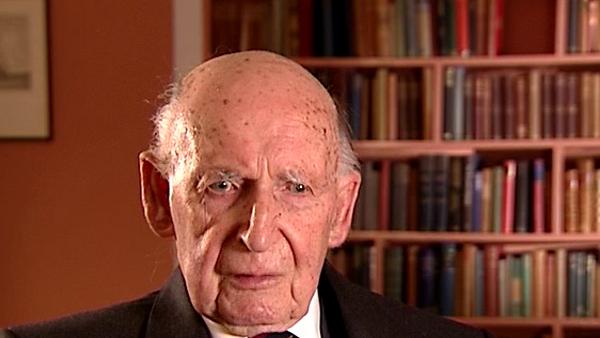NEXT STORY

Building the MK I Radio Telescope and changes to the design
RELATED STORIES

NEXT STORY

Building the MK I Radio Telescope and changes to the design
RELATED STORIES



We started, first of all, with land trouble. I wanted to build the telescope where it is now. The land did not belong to us, so we proceeded to bore for the foundations, first of all in what is now the car park, belonging to the Science Centre, next to the Arboretum, and then into a part of the Arboretum. I had involved, or got involved, in a severe dispute with the owners of the farm who owned that piece of land. The university were willing to buy it, the old lady who owned the farm was living – and the son, one of her five sons – was living with her, and using... and doing the farming. She died, and the opportunity arose for buying this farm, but the details are not really relevant to this story, because it's a not infrequent dispute between the ownership and who we were going to pay the money from the five brothers, and so on.
Anyhow, we eventually got a High Court decision that the university could buy this field. They did so, and in September of 1952 loads of machinery began to arrive at Jodrell Bank, and the piling began for the foundations. The first thing that happened is the farmer threw all the mechanism back over the hedge and put a bull in the field. That was the sort of attitude in which the foundations began for the radio telescope. The piling of the telescope began without incident, and I... The one trouble that arose was that the previous borings made by Husband in the area of the car park showed that the depth of the piling would go down to about 80 feet before it reached Keuper Marl. I ought to say the preliminary study had shown that the top foot or so was soil and clay, and then there was running sand until one reached the ancient Keuper Marl.
Now, the... when we came to build the 320 foot track foundations for the, for the 320 foot track for the radio telescope, we found that indeed the Keuper Marl was reached at one part of the diameter at about 80 feet, but alas, the Keuper Marl then sloped steeply, and we had to go down to over 100 feet the other side. This led to the first increase in the cost of the telescope, but that was not of great significance. It was regarded as being acceptable, and we were left, after about a year or so, with a ring of concrete, six foot reinforced concrete, built on a bed of 160 piles, going down to the Keuper Marl, on which was to be a double railway track, to carry the load of the telescope. So, in 1953 or thereabouts, we were left with a muddy site, a ring of concrete, which had cost us something like £100,000. But no one was particularly worried about that.
Bernard Lovell (1913-2012), British radio astronomer and founder of the Jodrell Bank Observatory, received an OBE in 1946 for his work on radar, and was knighted in 1961 for his contribution to the development of radio astronomy. He obtained a PhD in 1936 at the University of Bristol. His steerable radio telescope, which tracked Sputnik across the sky, is now named the Lovell telescope.
Title: Building the foundations of the MK I Radio Telescope
Listeners: Megan Argo Alastair Gunn
Megan Argo is an astronomer at the University of Manchester's Jodrell Bank Observatory researching supernovae and star formation in nearby starburst galaxies. As well as research, she is involved with events in the Observatory's Visitor Centre explaining both astronomy and the history of the Observatory to the public.
Alastair Gunn is an astrophysicist at Jodrell Bank Observatory, University of Manchester. He is responsible for the coordination and execution of international radio astronomical observations at the institute and his professional research concerns the extended atmospheres of highly active binary stars. Alastair has a deep interest and knowledge of the history of radio astronomy in general and of Jodrell Bank in particular. He has written extensively about Jodrell Bank's history.
Tags: Jodrell Bank, Charles Husband
Duration: 4 minutes, 21 seconds
Date story recorded: January 2007
Date story went live: 05 September 2008